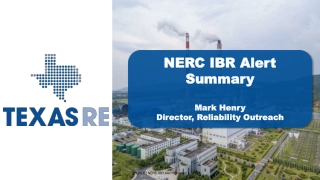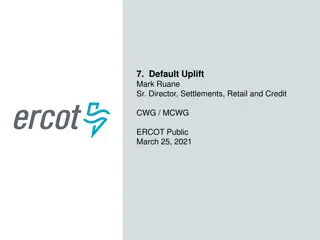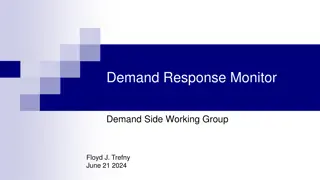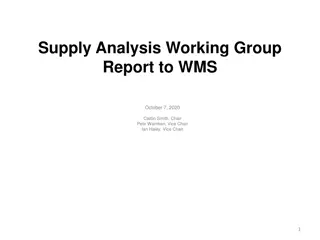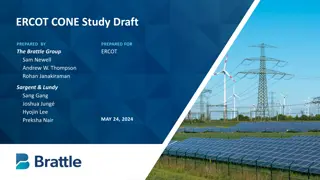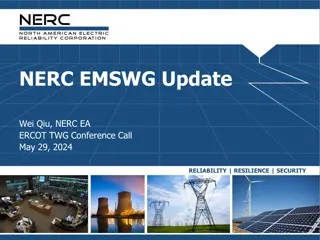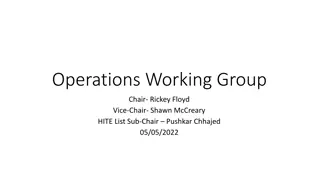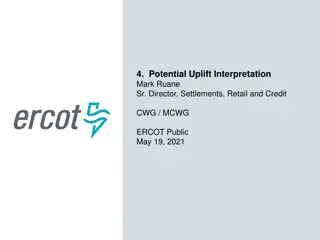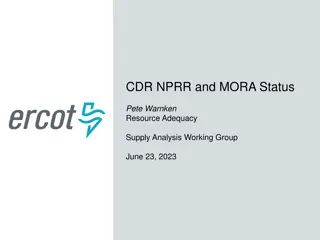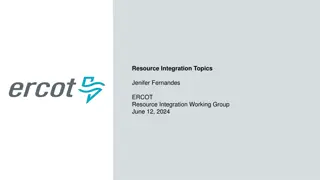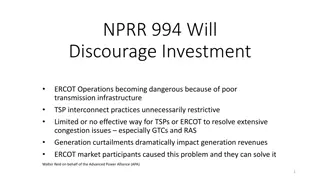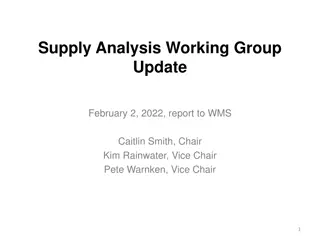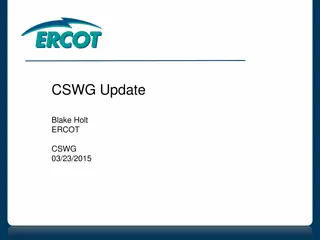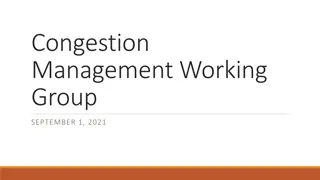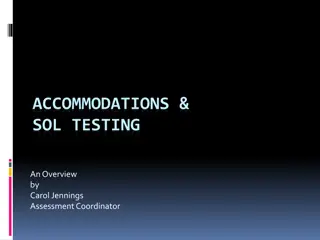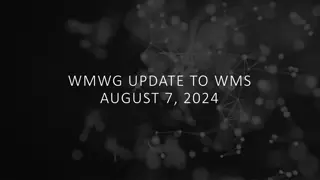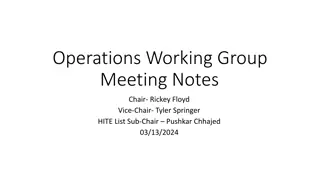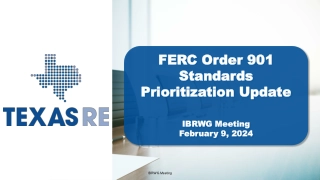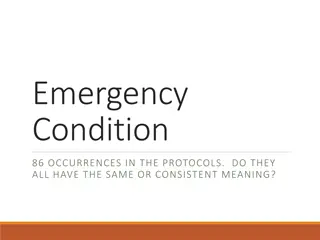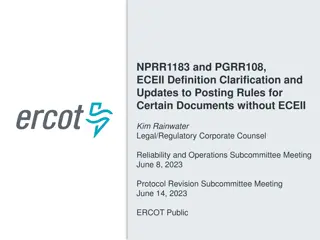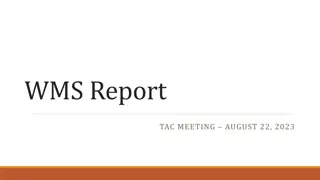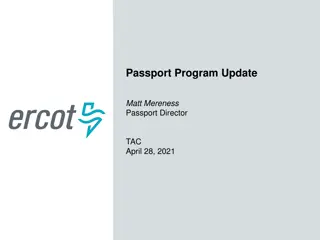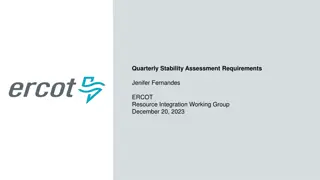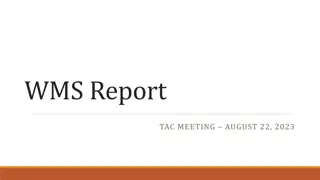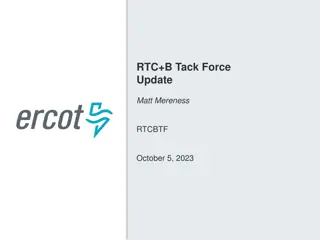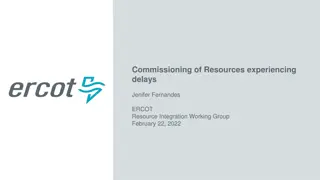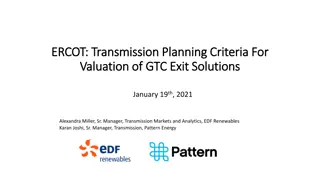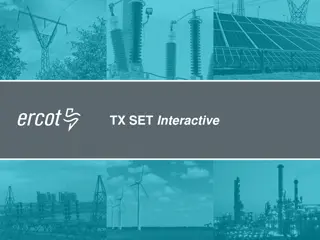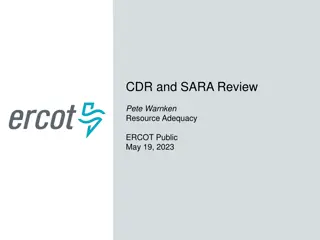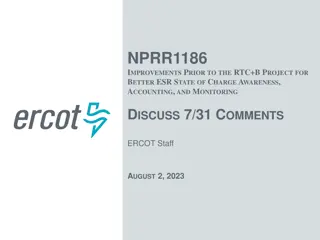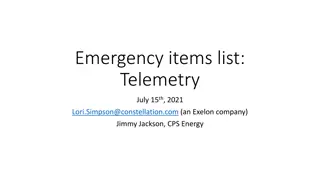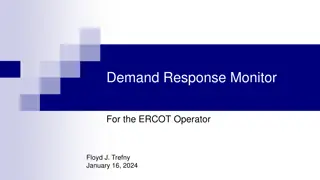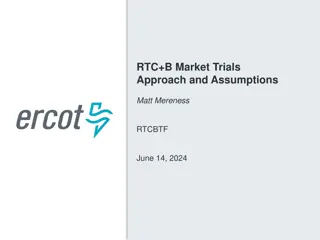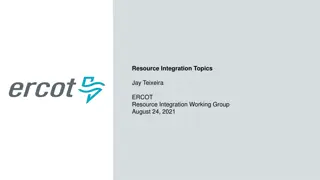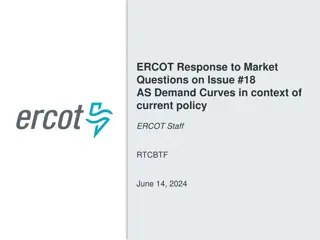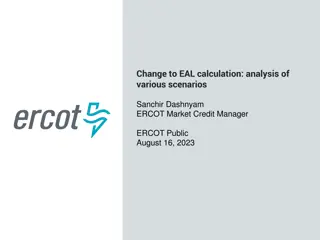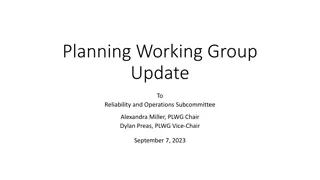Understanding ERCOT SOL Methodology and NERC Standards
Explore the ERCOT SOL Methodology for Planning and Operations Horizons as outlined by Stephen Solis in 2014. Learn about System Operating Limits, Interconnection Reliability Operating Limits, and the relationship between ERCOT and Transmission Planners/Operators. Discover the purpose, changes made, related NERC Standards, and the impact of the 2011 Arizona/San Diego Blackout.
Download Presentation

Please find below an Image/Link to download the presentation.
The content on the website is provided AS IS for your information and personal use only. It may not be sold, licensed, or shared on other websites without obtaining consent from the author. Download presentation by click this link. If you encounter any issues during the download, it is possible that the publisher has removed the file from their server.
E N D
Presentation Transcript
ERCOT SOL Methodology for the Planning and Operations Horizons Stephen Solis 2014 OTS 1
Objectives At the completion of this course of instruction you will: Identify the purpose of the ERCOT SOL methodology. Identify the related NERC Standards Identify what is a System Operating Limit (SOL) Identify what is an Interconnection Reliability Operating Limits (IROL) Identify relationships and impacts between ERCOT and Transmission Planners/Transmission Operators 2
Purpose of ERCOT SOL Methodology Ensure System Operating Limits (SOLs) are determined based on an established methodology Describes the methodology for determining Interconnection Reliability Operating Limits (IROLs) Documents communications 3
Why did it change? Recommendations from Texas Reliability Entity in 2012 2011 Arizona/San Diego Blackout. To increase clarity. To improve on the criteria for determination of IROLs. Combined the planning and operations horizon SOL methodologies for consistency and ensuring review of changes 4
2011 Arizona/San Diego Blackout 18 Operating Limits and Establish Valid System Operating Limits Failure to recognize Interconnection Reliability 24 Establishing SOLs Not Recognizing Relay Settings When 5
Related NERC Standards System Operating Limits Methodology for the Planning Horizon : FAC-010-2.1 System Operating Limits Methodology for the Operations Horizon: FAC-011-2 Establish and Communicate System Operating Limits: FAC-014-2 6
FAC-010-2.1 Applicable to Planning Authority only R1 R3 detail what the methodology must contain and address. R4 details who the methodology must be distributed to. R5 details the requirement to respond to comments within 45 calendar days (retired as part of paragraph 81" efforts) 7
FAC-011-2 Applicable to Reliability Coordinator only Same requirements as FAC-010-2.1 8
FAC-014-2 Applicable to RC, PA, TP, and TOP R1 R4: establish SOLs/IROLs consistent with the methodology R5: Provide SOLS/IROLs to those with need R6: PAcommunicate multiple contingencies resulting in stability limits to the RC. 9
What is a SOL? The value (such as MW, MVar, Amperes, Frequency or Volts) that satisfies the most limiting of the prescribed operating criteria for a specified system configuration to ensure operation within acceptable reliability criteria. System Operating Limits are based upon certain operating criteria. These include, but are not limited to: Facility Ratings (Applicable pre- and post-Contingency equipment or facility ratings) Transient Stability Ratings (Applicable pre- and post- Contingency Stability Limits) Voltage Stability Ratings (Applicable pre- and post- Contingency Voltage Stability) System Voltage Limits (Applicable pre- and post- Contingency Voltage Limits) 10
What is a SOL? Several limits ensure operation within acceptable reliability criteria Facility ratings are the majority of the SOLs. Typically, the most restrictive Stability limits or Interface limits constitute additional SOLs may be the most restrictive 11
What is a SOL? Example 1: Line A to B 138kV has a thermal facility rating of 100 MVA continuous rating. Line A to B 138kV has a voltage stability limit of 150 MVA Line A to B 138kV has a dynamic stability limit of 130 MVA What is its System Operating Limit? Answer: Line A to B 138kV has a thermal facility rating of 100 MVA continuous rating which is the most restrictive of the limits and is thus the System Operating Limit. 12
What is a SOL? Example 2: Line A to B 138kV has a thermal facility rating of 100 MVA continuous rating. Line A to B 138kV has a voltage stability limit of 90 MVA Line A to B 138kV has a dynamic stability limit of 130 MVA What is its System Operating Limit? Answer: Line A to B has a voltage stability limit of 90 MVA which is the most restrictive of the limits and is thus the System Operating Limit. 13
What is a SOL? Example 3: Line A to B 138kV has a thermal facility rating of 100 MVA Normal (Continuous) rating. Line A to B 138kV has a thermal facility rating of 120 MVA Emergency (2 hour) rating. Line A to B 138kV has a thermal facility rating of 140 MVA 15 minute (Load Shed) rating. What is its System Operating Limit? Answer: All of the above. Each facility rating is a System Operating Limit with an associated time frame. The facility can be operated at 100 MVA continuously, up to 120 MVA for up to 2 hours, and up to 140 MVA for up to 15 minutes. 14
Steady State Voltage SOLs Steady State Voltage SOLs in ERCOT: (1) 0.95 per unit to 1.05 per unit in the pre- contingency state (and with all facilities in service in the planning horizon) (2) 0.90 per unit to 1.10 per unit in the post- contingency state (following a NERC Category B or C contingency (where appropriate) These are default unless otherwise communicated by the Facility Owner. 15
Additional SOLs Result from studies indicating a more restrictive limit that results in the following: Transient, dynamic instability (loss of a generator due to the instability) Voltage instability (uncontrolled voltage loss) Cascading or uncontrolled separation; Post disturbance frequency outside the range 59.4 Hz to 60.4 Hz 16
Additional SOLs (continued) Manual system adjustments, e.g., system reconfiguration between contingencies in an N-1-1 Category C event, or load shedding are needed in order to prevent Cascading or transient, dynamic, or voltage instability. 17
Additional SOLs (continued) Voltage stability margin in the planning horizon is not sufficient to maintain post-transient voltage stability under the following two conditions for an ERCOT or TP- defined area: A 5% increase in Load above expected peak supplied from resources external to the ERCOT or TP-defined area and NERC Category A or B operating conditions; or A 2.5% increase in Load above expected peak supplied from resources external to the ERCOT or TP-defined area and NERC Category C operating conditions; 18
Sub Bulk Electric System(BES) facilities In ERCOT, 69kV facilities are considered transmission and are monitored and secured. The SOL methodology applies to BES facilities. Non-BES facilities and contingencies can be evaluated for their effect in determining a SOL on BES facilities. Non-BES facilities have limits that are enforced, just not SOLs as defined by NERC. 19
When is a SOL and IROL? Interconnection Reliability Operating Limit (IROL) SOL that, if violated, could lead to: instability, uncontrolled separation, or Cascading Outages Cascading Uncontrolled successive loss of system elements widespread electric service interruption that cannot be restrained from sequentially spreading beyond an area predetermined by studies. 20
When is a SOL an IROL? An SOL is an IROL if: Loss of load (manual or auto) is greater than 6% of the ERCOT Interconnection load level used in the study Triggers automatic under-frequency load shedding Observable inter-area oscillation with damping ratio less than 3%. 21
Where did the 6% come from? Previous SOL methodologies used a 20% load threshold and exercised engineering judgment when the loss of load in a study was less than 20%. 6% is a conservative value so that a loss of load should not cause generation to begin tripping off as a result of the loss of load (over-frequency). ERCOT Operating Guides Section 2.6.2 requires no automatic tripping below 60.6 Hz. Any set points between 60.6Hz and 61.6Hz should not trip within 9 minutes. 22
Load Loss in Study Previous Versions Current Version Load Loss in Study Load Loss in Study 20% IROL Defend why a SOL with a consequence of load loss greater than 6% is not an IROL Defend why a SOL with less than 20% load loss should be an IROL. IROL 6% 23
ERCOT ISO and Transmission Planners/Transmission Operators ERCOT ISO: single RC and PA for the ERCOT Interconnection. distributes this methodology to all TPs and TOPs in the ERCOT Interconnection. establishesSOLs in accordance with the SOL methodology. respondstocomments on the SOL methodology. providesSOLs (including IROLs) to TOPs and TPs in the ERCOT Interconnection that provide a written request that includes a schedule for delivery of those limits. 24
ERCOT ISO and Transmission Planners/Transmission Operators TPs and TOPs establish SOLs in accordance with the SOL methodology. provide any SOLs to ERCOT ISO. Facility Ratings Special Transfer Limits Stability Limits should incorporate any SOLs that are provided to them by ERCOT ISO or adjacent entities that affect their area into their studies for determining SOLs. TPs provide SOLs to adjacent TPs and TOPs 25
Summary The SOL Methodology ensures that SOLs used in the reliable operation of the ERCOT System are determined based on an established methodology. The SOL is the most restrictive of all ratings or limits on a BES facility or element. IROLs are the subset of SOLs that meet the IROL criteria. SOLs are distributed amongst TPs, TOPs, and ERCOT ISO. 26
References 1.) NERC Glossary of Terms http://www.nerc.com/pa/Stand/Glossary%20of%20Terms/Glossary_of_ Terms.pdf 2.) NERC Reliability Standards http://www.nerc.com/pa/Stand/Reliability%20Standards%20Complete% 20Set/RSCompleteSet.pdf 3.) ERCOT Operating Guides http://www.ercot.com/content/mktrules/guides/noperating/2013/1007/Oc tober_7,_2013_Nodal_Operating_Guides.pdf 4.) Arizona-Southern California Outages on September 8, 2011 http://www.ferc.gov/legal/staff-reports/04-27-2012-ferc-nerc-report.pdf 5.) ERCOT System Operating Limit Methodology for the Planning and Operations Horizon http://planning.ercot.com/login/login (Home > Procedures > Planning Horizon Limits Documents. ) 27
Questions 28
1. The purpose of the ERCOT SOL methodology is to ensure System Operating Limits (SOLs) is determined based on a ______________ ______________? a) established methodology b) load forecast c) network model d) increased clarity 29
2. Which of the following NERC related standards are applicable to System Operating Limits (SOLs)? a) FAC-010-2.1 b) FAC-011-2 c) FAC-014-2 d) All of the above 30
3. ____________ ratings are the majority of the System Operating Limits (SOLs) and are typically the ________ restrictive. a) Facility; most b) Generator; most c) Wave trap; least d) Insulator; most 31
4. An SOL is an IROL if loss of load (manual or automatic) is greater than _________ of the ERCOT interconnection load level used in the study. a) 4% b) 3% c) 5% d) 6% 32
5. ERCOT ISO ___________ SOLs in accordance with the SOL methodology. a) establishes b) collects c) protects d) auctions 33


